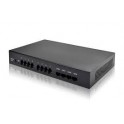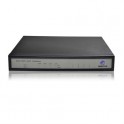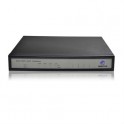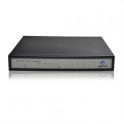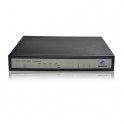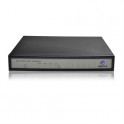| IP Telephony Protocol |
- SIP – RFC3261. Multiple SIP Proxy support via DNS SRV, Multiple registrations, SIP over TLS, TCP and UDP. Seamless fallback across redundant servers. Multipple Virtual gateways, PRACK and UPDATE.
- IPv6 addressing - Most network-related features of the Mediatrix unit receiving and sending packets on the Internet protocol can be used on both IPv4 and IPv6, OCSP (Online Certificate Status Protocol) revocation status verification for TLS links, ANAT grouping in the SDP, Media stream may now be on a different network than SIP signalling, Call router automatic routes may now have multiple SIP gateways for sources and destinations.
|
| Voice Processing |
- Vocoders: G.711 (A-law, μ-law), G.723.1a, G.726, G.729a/b, G.168 echo cancellation (64ms), DTMF detection and generation, Carrier tone detection and generation, Silence detection / suppression and Comfort Noise Generation level software adjustable, Configurable dejitter buffer, Configurable tones (dial, ringing, busy), Configurable transmit packet length, RTP/RTCP - RFC 1889, RFC 1890, RFC 2833, RFC 3389.
|
| Enhanced Security |
- SIP over TLS, SRTP with MIKEY key management protocol (RFC 3830 and 4567) and SDES key management protocol (RFC 4568), X.509 Certificate management. HTTPS for the exchange of Configuration File and web pages, SNMPv3 and TR-069 management protocols. Supported Aunthentication: SHA1, MD5. Supported Key Exchange Mechanism: RSA, Diffie-Hellman., Supported Cyphers:AES (128 and 256 bits), 3DES (168 bits), DES (56 bits), Blowfish (448 bits).
|
| Fax and Modem Support |
- Group 3/Super G3 Fax real-time FoIP over clear channel (G.711), G.726 or T.38 Fax relay (9.6 k, 14.4 k), MODEM tone detection and pass-through over G.711 and G.726.
|
| Enhanced Telephony Features |
- Multiple SIP Proxy support via DNS SRV, Call Forward / Call Transfer / Conference Call / Call Waiting support, T.38, fax tone detection and pass-through on G.711 and G.726, Inter-digit timer and IP dialing, Echo Cancellation / Dynamic Jitter Buffer / Voice Activity Detection / Silence Suppression, Message Waiting Indication, via FSK, Flash hook event signaling, Caller ID Generation (Name & Number) as per Bellcore DTMF or FSK, CCNR / CCBS, PRACK & UPDATE, Multiple Virtual Gateways.
|
| Call Routing |
- Local switching, Interface hunt groups, Routing Criteria (Interface,Calling/called party number,Time of day, day of week, date, ISDN bearer capability), Number manipulation functions (Replace numbers, Add/remove digits, PLAR), Call properties manipulations, SIP header manipulations
|
| Management |
- Web-based GUI, FTP, TFTP, HTTP/ HTTPS configuration up- and download (Auto-provisioning), FTP, TFTP, HTTP / HTTPS firmware upgrade, SNMPv1, v2 and v3 agent (MIB II and private MIB), TR-069 for massive deployments (optional feature available at purchase time), TELNET, SSH, Remote Services activation to purchase service licenses for deployed units, permitting to enable TR-069 feature in the field, TR-104 to permit large provisioning systems to communicate with CPE on private networks, Subscribes services for IMS: Transfer methods and real time media provisioning
|
| QOS |
- ToS, DiffServ, 802.1p, 802.1Q, RFC 3489.
|
| WAN/LAN Connection |
- 2 x 10/100 Base T Ethernet RJ-45 connectors.
|
| Operating Environment |
- Operating temperature: 0°C to 45°C, Storage temperature: -20°C to 70°C, Humidity: up to 85%, non-condensing.
|
| Power Supply |
- AC: Standard power cord receptacle (IEC 320-C14) for universal AC input internal SMPS.
|
| Unit Dimensions and Weight |
- 4.4 cm x 43 cm x 21 cm - 1.74 in. x 17.19 in. x 8.4 in. (approx.), 1.8 kg (4 lbs) approx.
|
| Warranty |
|
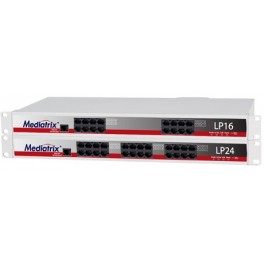 Maximize
Maximize



































